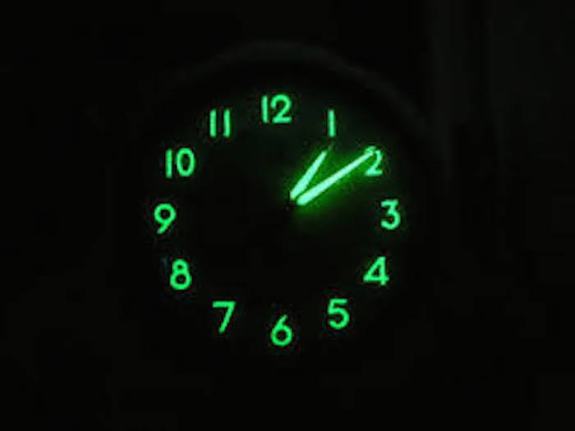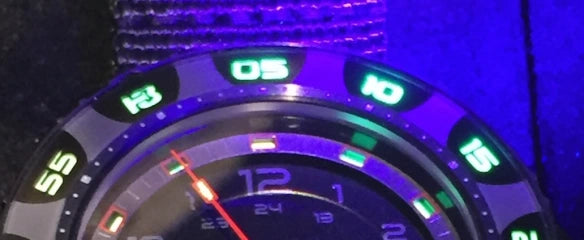What Makes Your Watch Glow in the Dark?
Today, so many watch brands offer timepieces with hands or numerals that glow in the dark, but did you ever wonder how they bring luminescence to the dial? Over the years, the materials used to make dials easy to read at night or underwater have evolved, from dangerous and life-threatening substances, such as radium in the early 1900s, to today’s safer and brighter methods.

Easily the most common product used today to make the hands and markers luminous is a material that was developed in the early 1990s: Super-LumiNova. The patented product comes in a variety of glowing colors, ranging from blue to green and even orange. It is made from a mix of materials, predominantly strontium aluminate, and is not radioactive.

Since its creation, the strength of Super-LumiNova has evolved to the point where now, depending on the amount and type used by the individual watch brands, it can be as much as 10 times brighter than earlier materials. The substance is applied in various strengths or coatings to the hands, the numerals, indices or other accents on the dial. It absorbs UV light and subsequently can glow in the dark for hours.
Other materials sometimes used by professional sport watchbands include “gaseous tritium light source” (GTLS) — tiny tubes of tritium placed together to offer an intense brightness stronger than Super-LumiNova. The material is radioactive and so it is hermetically sealed in the tiny tubes. The company best known for supplying these tiny tubes is MB-Microtec. While Super-LumiNova can dim after 20-30 minutes if it doesn’t get further UV exposure, the tritium capsules don’t dim for 20 years. However, this substance is banned in some countries.

